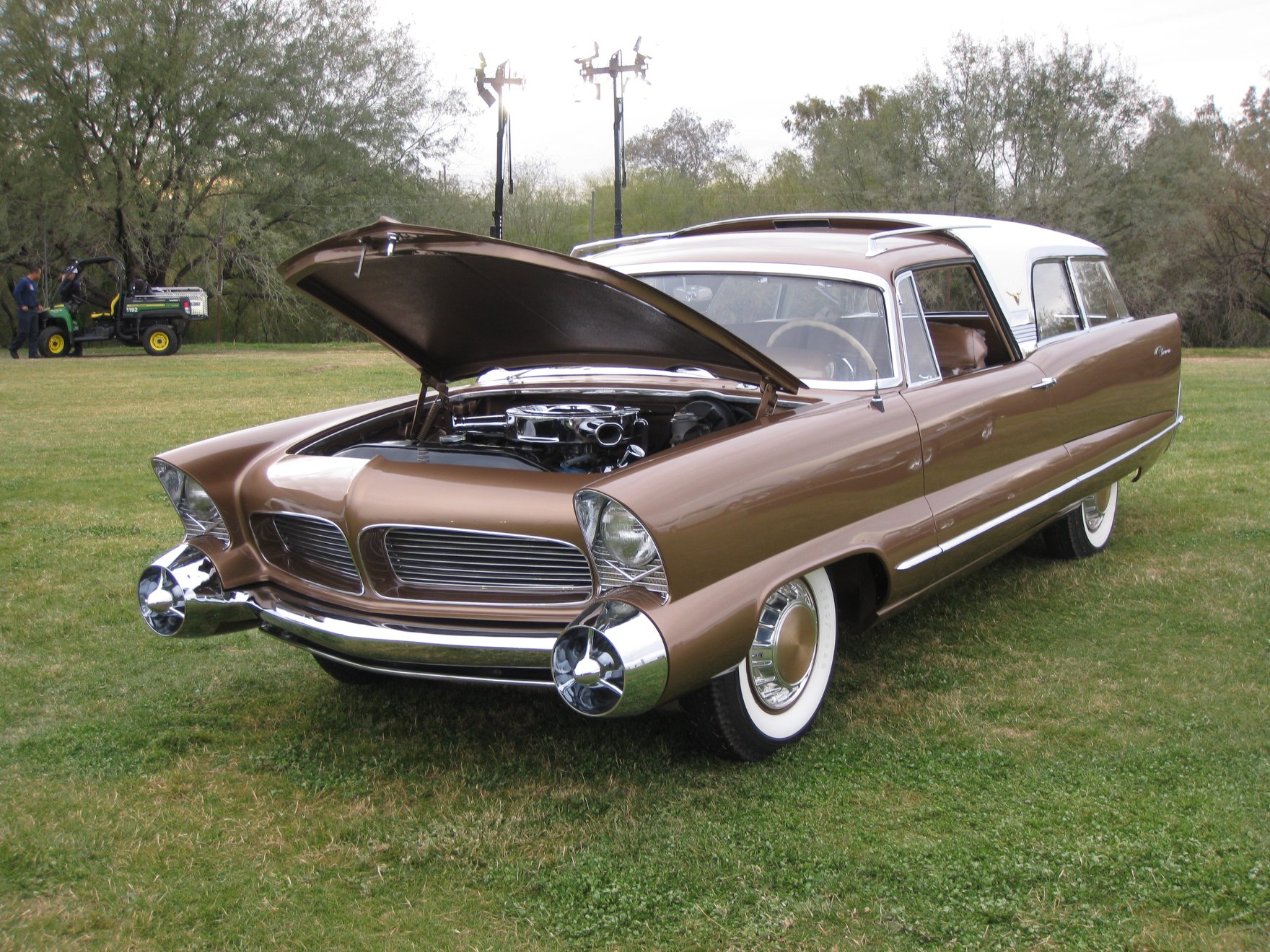
Note: Today’s post is by a friend of mine in Sweden, who goes by the nom de plume of Billie Biscayne. She’s always loved Fifties cars and wanted to submit a post right here on RG. Please welcome her. -TK
Have you seen Barrett-Jackson on tv and made a mental note of putting that on your bucket list? Barrett-Jackson puts on an amazing show, but there is more to Scottsdale Auction week if you are prepared to venture off the beaten track and visit some of the other auctions going on! If you are lucky, you will see some fantastic cars, meet some amazing people and hear some astonishing car stories, just like this one about the infamous Plainsman Concept Car where a chance encounter with the current owner, Mr. Pete Vicari, at Worldwide Auctioneers provided the material for this article!
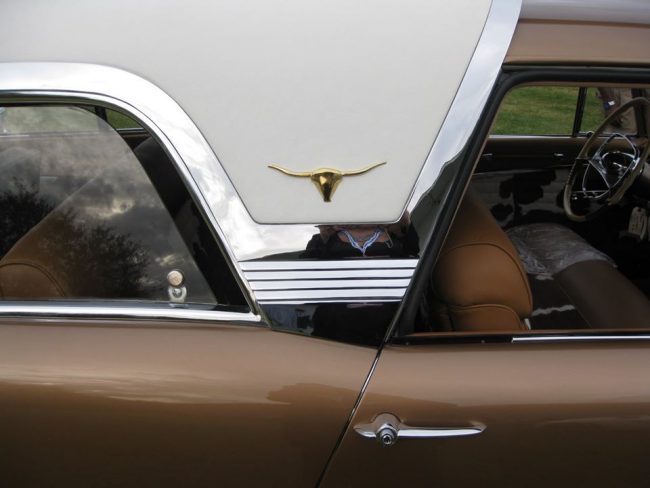
Indiana-based Worldwide Auctioneers are located at a new location in Singh Meadows in Scottsdale, Arizona, for 2020 but have been present in Scottsdale since 2017. Having seen the 1956 Chrysler Ghia Plainsman Concept Car in their 2020 catalogue it was obvious that visiting Worldwide Auctioneers to see this fascinating one of a kind car was a must, and it certainly was no disappointment! Not only did we see the car, but we had the pleasure of talking to the owner and restorer, Mr. Pete Vicari who very generously supplied the extremely remarkable and intriguing history of this super rare car!
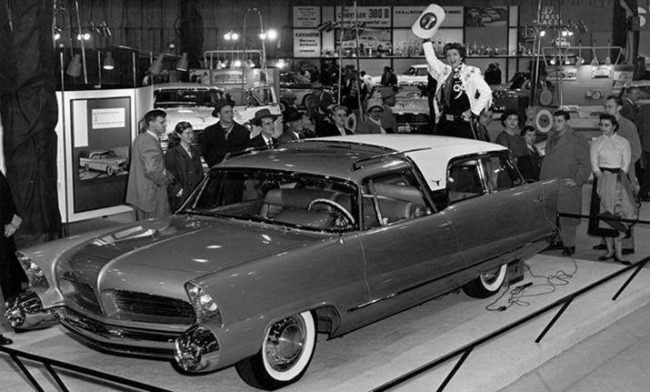
The 1956 Chrysler Ghia Plainsman Concept Car was originally designed by Dave Scott of Plymouth Studios (a stylist given free reigns by Virgil Exner) and built by Ghia Coachbuilders in Italy where it was never formally shown at any car show. Instead it was shipped to the United States to join the concept cars displayed during the 1956 Chicago Auto Show, the largest auto show in North America which was first staged in 1901 and has been held more times than any other auto exposition on the continent.
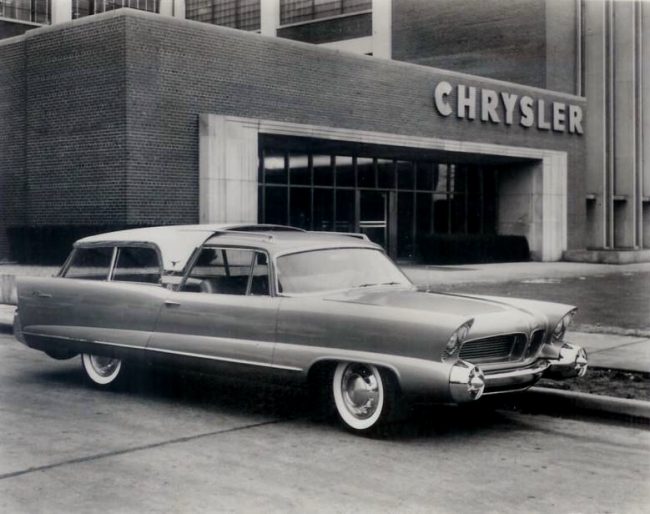
The annual auto shows held in the 1950’s, such as the Chicago Auto Show, were a way for the automotive industry to showcase what tomorrow would hold for motorists of the future and offered an insight into the latest styling trends, innovations, technologies and advancements in engineering along with the concept cars on display.
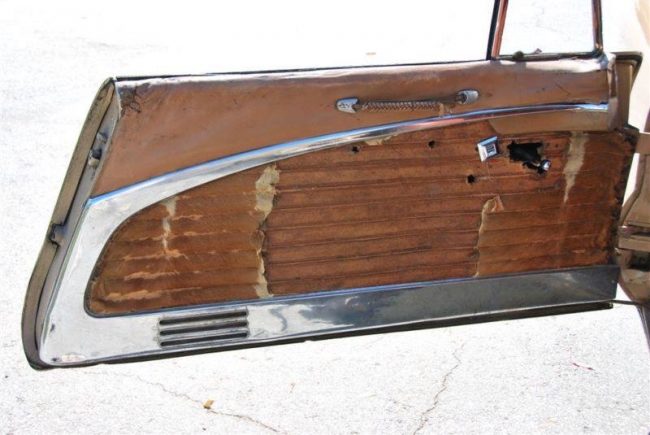
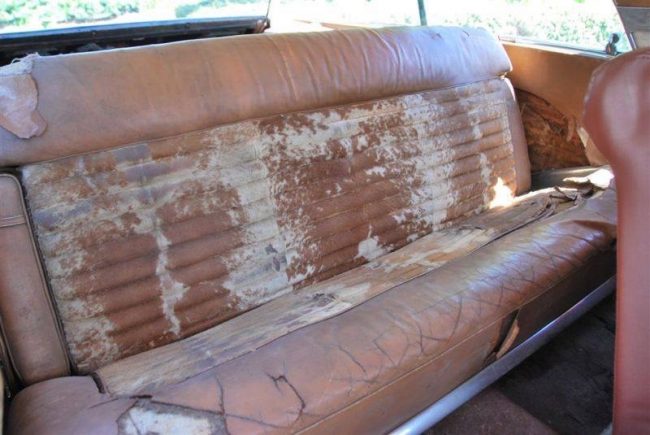
When the Plainsman was displayed its theme was “Go West”. The United States in the 1950’s experienced marked economic growth and there was a large-scale expansion of the middle class. The need to always have more and better goods emerged rapidly in the West during the 1950’s. Consumerism became a key component of Western society and many Americans spent the 1950’s moving and searching. California’s population grew by 49% during the 1950’s.
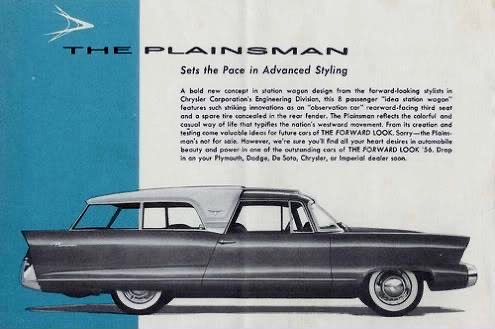
When the fully functioning Plainsman was displayed at the 1956 Chicago Auto Show it was marketed as the chic gentleman´s option to head west which was also incorporated into the design with amongst other things hand-crafted steers’ head badges and calf skin inserts in the Southwestern-themed interior. The Plainsman reflects its era in many other ways as America’s obsession with space travel led to rocket shaped vehicles, spaceflight inspired aesthetics and ornamental tailfins.
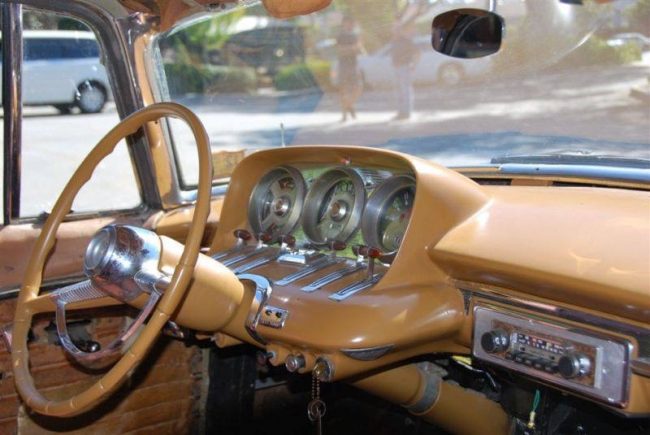
In the case of the Plainsman this resulted in design features such as faux turbine intakes running from front bumper to rear quarter panel and the rear fender tailfins. Not even the current baby boom was overlooked by the Plainsman as it featured an automated tailgate with a retractable window and rear facing retractable centre and rear “spectator” seats for the kiddies! Up to six adults could sit comfortably on the front and center bench seats – the perfect vehicle for the family heading for those exciting adventures awaiting out West!
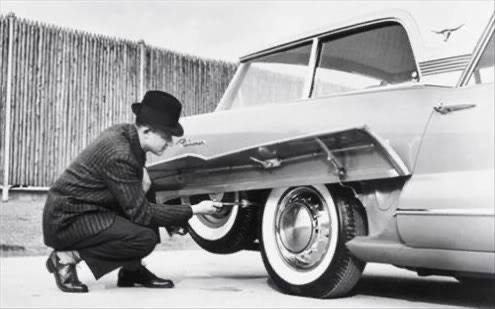
The Plainsman was powered by a 260 cu.in. 167 HP V8 with a PowerFlite automatic transmission. This was later exchanged for a 440 cu.in. V8 which is the engine still in the car today along with TorqueFlite transmission which was added along with the new engine.
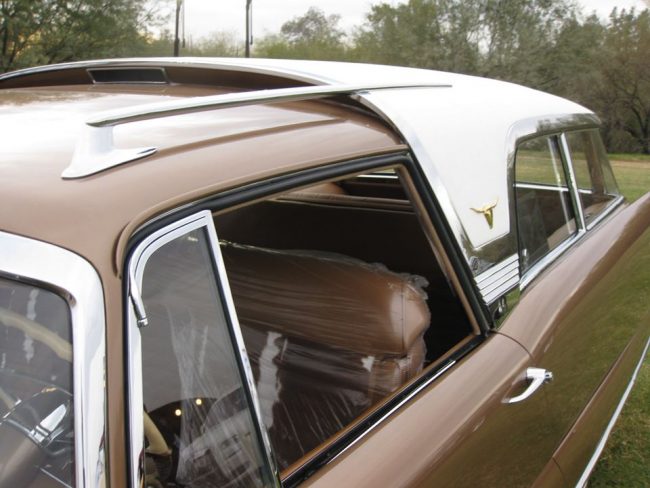
The story of the Plainsman goes back to two college roommates, William Newberg (who later became executive vice president of Chrysler) and Elwood Parrish (who later became Chrysler’s Export Manager in Cuba). As the body of the Plainsman had been crafted in Italy, Chrysler was told by US customs after the Chicago Auto Show that the car would have to either leave the country or Chrysler would have to pay the duty within 18 months. At this point Newberg reached out to his old college roommate Parrish to see if he was willing to accept the car “for a job well done” as a way of moving the car out of the U.S. to avoid paying the duty. Parrish accepted, and in 1957 the Plainsman was shipped from Detroit to Havana. Parrish later cut a deal with Chrysler to buy the car and it stayed with him and his family for around 50 years and was often used as a daily driver.
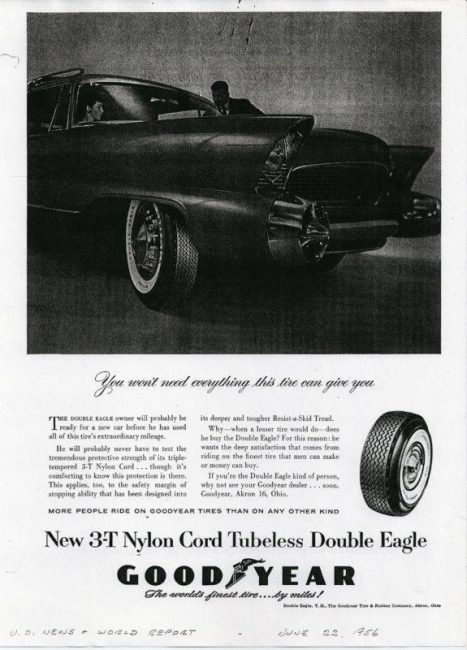
In 1959 Fidel Castro assumed military and political power as Cuba´s Prime Minister and soon started confiscating the property of foreign landowners which prompted Parrish to establish an elaborate plan to escape Cuba without leaving the Plainsman behind. Fortunately, he lived next door to the shipping center and swiftly had his gardeners dismantle the bricks of his house that faced the docks, however still leaving the wall visibly intact not to attract attention.
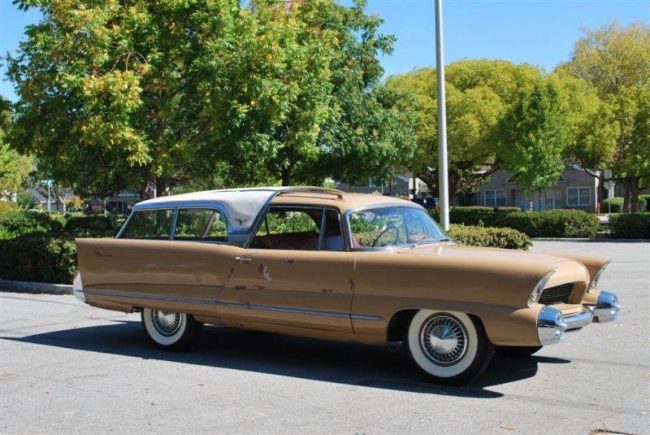
Mrs. Parrish then filled the Plainsman with their most personal items, along with their housekeeper, and at midnight they broke through the already disassembled wall facing the shipping center and managed to load the Plainsman onto a ship with two hours to spare before it set sail to Puerto Rico! The Plainsman’s 106 cubic feet of cargo space (provided the seats were folded) must have come in handy!
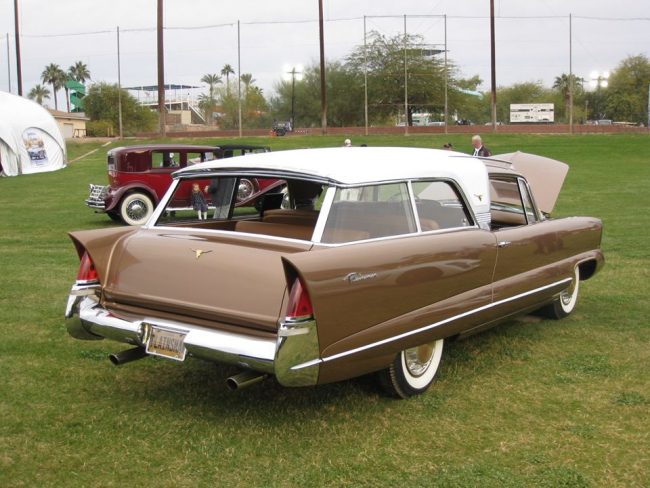
The Parrishes then relocated to Australia where Mr. Parrish was offered a job. To comply with Australian regulations the Plainsman was converted to right hand drive. When Parrish retired he returned to California, of course bringing the Plainsman with him, which was then converted back to left hand drive and this is also when the 440 cu.in. V8 engine and TorqueFlite transmission was installed as the original 260 engine failed.

At this stage the Plainsman was in a rather rough condition and Parrish realized he would not be able to restore it to its former glory and therefore offered it for sale with RM Auctions in 2010, but the lot did not sell. Another attempt to sell the Plainsman was made with Mecum 7 months later but the car once again failed to meet its reserve. In 2011 it was listed on e-bay, receiving a high bid of $128,299 which was not sufficient for it to change hands. 3 years later the Plainsman was finally sold with Auctions America. Unfortunately, also the new owner realized he lacked the time and skill to perform a worthy restoration of the car.

This is where Mr. Pete Vicari comes in! Vicari, who was foremostly intrigued by the rarity of the car, had the means, motivation and skills to restore the car (he has been restoring cars since the age of 12!) and therefore bought the Plainsman 3-4 years ago together with a friend. The two friends realized this would be their opportunity to bring back the only existing station wagon concept car in existence to its former glory. Unfortunately, the car was rusty and in a state of disrepair, but luckily complete with everything intact apart from one single molding missing on the tailgate which was later reproduced in brass.
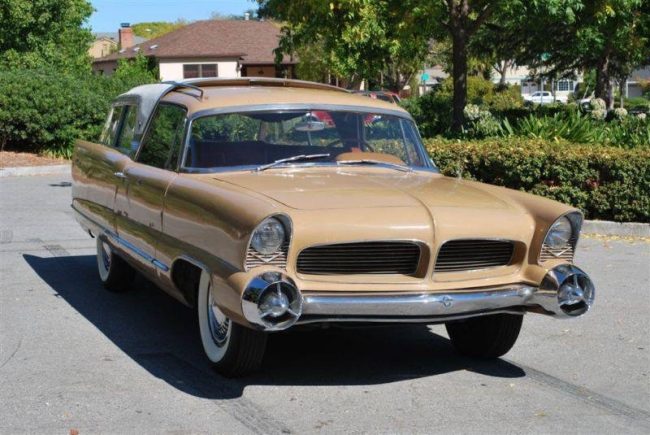
Even with the completeness and intactness considered, the two friends still had a challenge ahead of them restoring everything to originality. As the few existing photos and video-clips, mainly from the 1956 Chicago Auto Show, were in black and white it was difficult to ascertain the original color of the car, but after sanding down a few layers of paint the original color turned out to be “Palomino Beige”, or as Vicari calls it “Palomino Gold” which is a far more suitable description, and the current color of the car. The original leather dashboard was meticulously restored along with the original gages, chrome, bumpers, interior and everything else on the car!

As with any infamous car with this degree of rarity there are always going to be rumors. According to Vicari he was told that a man was shot and killed in the car when it resided in Cuba, but during the full body restoration not a sign of any bullet hole could be found, and faced with this fact the person who initially told the story of the shooting retracted his story and confessed to making it up.
Another rumor widely spread, amongst other places on the Internet, about the Plainsman is that it was once gifted to the President of the Cuban banks but returned to Chrysler upon his death before being offered to Mr. Parrish. Once again, just a rumor without an ounce of truth!
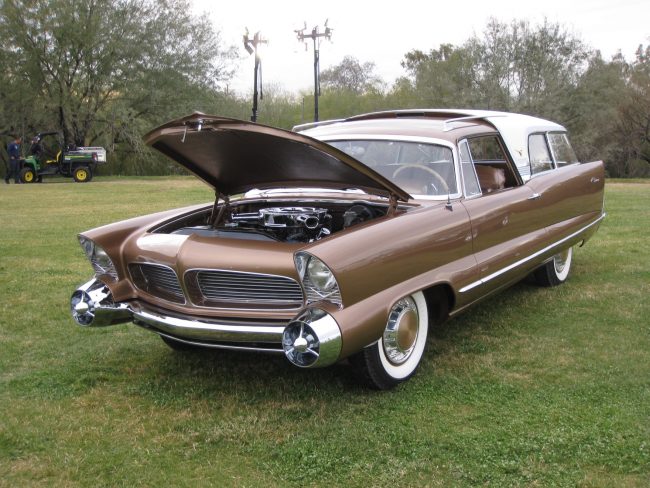
And of course, the final rumor! If you have ever heard about the 1956 Chrysler Ghia Plainsman Concept Car before you have probably heard that the luxurious calf skin inserts were made from the skin of unborn calves! This is the only true “rumor”, the reason being that unborn calf skin is shorter than average calf skin and therefore provides a smoother surface and more comfort. So how did our restorers tackle that issue in this era of promoted animal welfare where taking the skin of unborn calves would be unthinkable? They simply used ordinary calf skin and carefully shaved it! Another example of how two very dedicated and skilled car restorers have gone to every length to create an incredible restoration of the only surviving station wagon concept car and an invaluable piece of American automotive history, enabling a new generation to admire the over the top abundance, luxury and quirky details of the 1950’s cars that modern cars simply lack.







20 Comments
I love the look of this thing. It’s a rocket powered covered wagon.
This looks nothing like my Dad’s ’56 Dodge poverty spec wagon with the push button transmission. I do wish the old Dodge had those awesome (vent?) levers below the gauge cluster.
Interesting that the concept car had to leave the USA to avoid an onerous duty. One of the more sensible restrictions trying to curtail the big three from sluffing off their design and construction work to then low wage Italy. It had the added benefit of getting the car out and about around the world and avoid just gathering dust in some museum. Great story Billie, thanks
While the low cost (and not having to deal with the UAW) of offsourcing the job to Italy, which was still rebuilding after WWII, was one reason for Chrysler using Ghia to fabricate its concept cars in the 1950s, according to the Featherston and Thacker book on Chrysler’s “idea” cars, Exner and company were highly impressed by the quality of the work done by Ghia.
Too bad about the Chrysler Norseman that went down with the Andrea Doria, though.
Italy was low cost and clearly competent. However if the welfare of Americans is your countries priority, then putting up hurdles seems very sensible. Notice how when costs naturally rose and the Italian design genius aged out to be replaced by international riff raff, how one by one they failed.
What was really accomplished? Chrysler used Ghia for prototypes and show cars, in addition to the Turbine. Anything that reached series production was made in the USA, as the economics of making the cars in Italy only extended to hand-crafted vehicles. It was still more economical for US car companies to make show cars abroad, even accounting for having to destroy most of them to escape onerous duties on cars that nobody in the UAW was qualified to build anyway.
The Nash Metropolitan style outsource was probably what was feared by the government. Such a deal would have been a big score for one of the Italian style houses and their labor cost would have been even lower than Austin whose pound was still a little more sound. A while back Tom told us about the Italian compact motorcycle that Harley put their name on in this period.
FWIW, Nash tried FIAT for the Metropolitan project, the chassis they came up with was far to weak and under powered for American use .
The Met’s body style was 100 %American penned .
-Nate
Formally requesting someone (Tom, Billie…Ronnie??) tell the story of the Chrysler Norseman in proper RG fashion.
Perhaps it is just me, but the first thoughts that came into my mind upon seeing the name and history of this car was the genocide of native American lives and culture as European settlers (aka plainsman – but what about the women?) stole land while moving west across the continent. Then because greedy Chrysler didn’t want to pay their “fair share” to Uncle Sam, the car is moved to Cuba an island nation exploited by Western colonialism and capitalists. Then to avoid being taken for the Cuban people by their heroic savior Fidel Castro (just ask Bernie Sanders), the car is stealthily moved down under to another land of aboriginal genocide and exploitation at the hands of greedy English settlers. And with a 440 V-8 this bugger burns enough fuel to warm the planet and drown polar bears. With such a history, this car needs to be immediately destroyed so I can feel safe again – where is BLM and Antifa when you need them?
Bravo………..maybe
Sad times we live in when you can’t tell the difference between the New York Times editorial page (or front page) and the Babylon Bee.
If you want to see what the NY times thinks about your car, read the comments on this article.
https://www.google.com/amp/s/www.nytimes.com/2020/06/14/business/coronavirus-road-trip.amp.html
You mean the comments about the unnecessary risks they took to fly cross-country to Florida buy a van and drive it back to the Left coast? How they probably infected half the country with Covid all to get some stupid right-hand drive Japanese van, when they could have been joining BLM protests in Portland?
The Wagon Mafia approves, but why in tarnation are those jet thrusters pointing forward?
The console and switchgear are quite fetching. A 5 year old version of me longs to fly it to Mars.
I seem to recall that the Plainsman was in Joe Bortz’s collection of Motorama and other ’50s concept cars and that he ex-wife ended up with it after a contentious divorce.
It’s hard to imagine the same styling studio produced this montrosity of a hot mess and the stunning Norseman.
Wow ~ wild, over the top 1950’s Chrysler styling, I love it .
Glad to see it survived and is restored .
-Nate
Is there a vent up on the roof to draw air into the back, I wonder?
If nothing else, the wind noise from that styling detail must have sounded like a hurricane at highway speed!
I’m still waiting for Leon Dixon’s book “Saga Of The Plainsman – The Extraordinary Life And Times Of A Dream Car,” about the car, to be published. His article years ago in Special Interest Autos is worth looking up.
I actually heard from Mr. Dixon after this article went up. He seemed to feel that we’d somehow gotten a hold of his book and had plagiarized him. Made me sad.